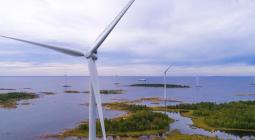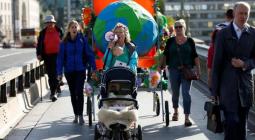Carbon-neutral in 15 years? The country with an ambitious plan.
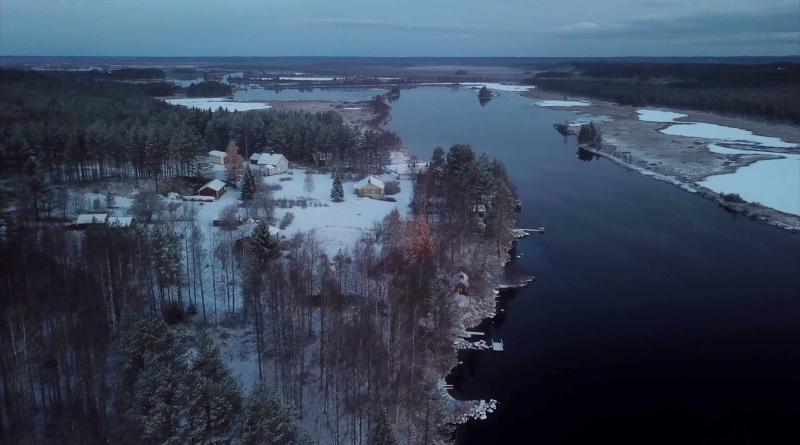
When a small village in Finland took the country’s biggest peat producer to court over a polluted river, it didn’t expect to win.
But it had a secret weapon - a local fisherman-turned-scientist whose work on climate change would help push his country’s government to adopt one of the toughest targets for reducing carbon emissions anywhere in the world.
Finland has pledged to be carbon-neutral by 2035 - that’s twice as fast as the UK government target. But to achieve this, it will have to make big changes, particularly in the peat industry, which currently provides energy, heating and jobs.
Can the Finns turn an ambitious plan into reality?
Dead fish
Tero Mustonen is mending nets when we arrive at his house one morning, in the village of Selkie near the Russian border. “When I was very young, we could witness far more clean waters,” he says. “The lake was a certain depth and doing well. There were good fish stocks.”
Tero has played a key role in Finland’s environmental story since 2010. One day, he and other local fishermen spotted dead fish floating on the surface of the water.
“There was a massive discharge of acidic waters here in Selkie that killed all the fish in our river,” he tells me nearly a decade later, sitting in his 18th Century log house on the edge of the forest.
The “acidic discharge” had come from a nearby peat field. When Tero saw the dead fish he immediately alerted Vapo, the peat extraction company that ran the site. The firm told him it had been caused by leaves falling into the river. But Tero knew that wasn’t right. And the dead fish were only a small part of a much bigger problem.
So Tero and his village did something no-one had ever done before. They took Vapo, the state-controlled peat company, to court. They argued that the acidic waters were a result of the company’s activities.
And they won.
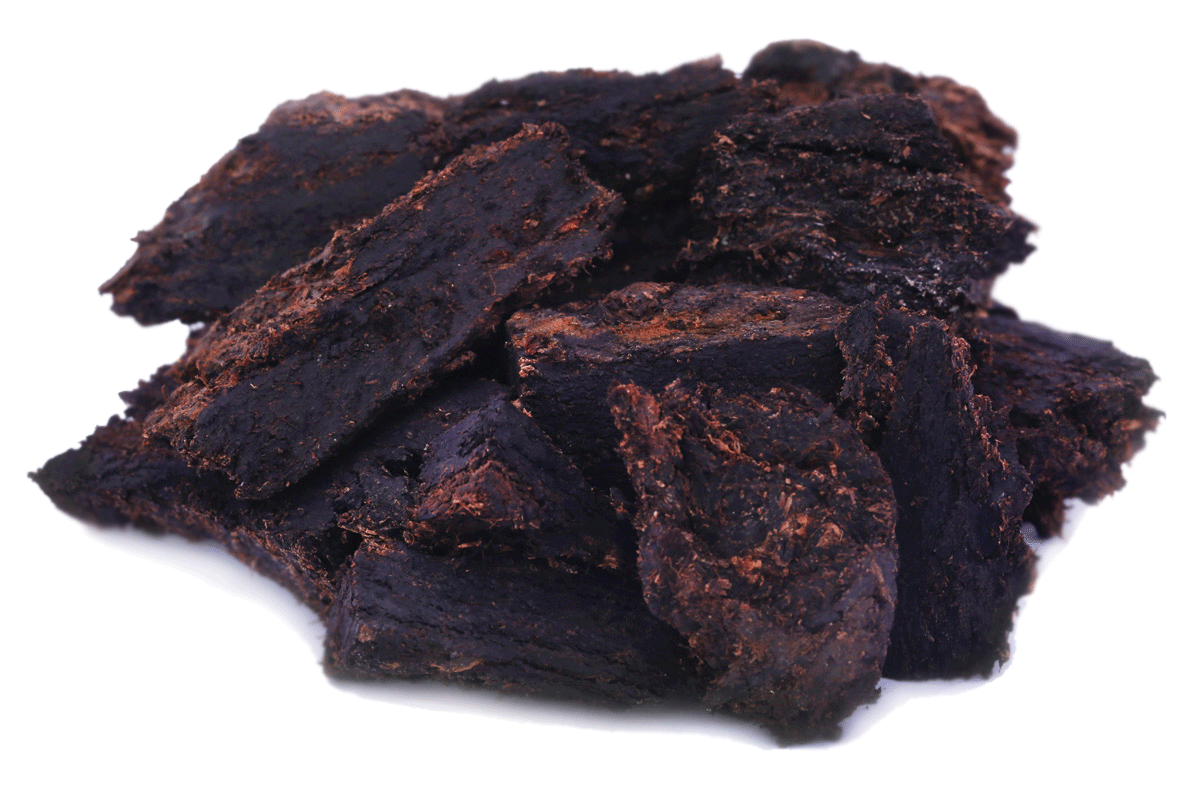
Peat is formed of decayed vegetation. When dried it can be burned like a fossil fuel. In Finland, peat provides around 4% of the nation’s electricity, and 15% of heating.
As a power source, peat is dirtier than coal. And it gets worse. Even after the peat has been extracted and burned, drained peatlands continue to emit previously locked-in, centuries-old greenhouse gases.
Environmentalists say a failure by Finland to cut its reliance on peat could make its target of having a carbon footprint of net zero by 2035 - set by the country’s new coalition government last year - hard to achieve.
“This became the first area where [Vapo] had to retreat and start the restoration,” he explains, as we pick our way over what was once a peat bog. Now it looks more like a brown and black moonscape.
“When these were degraded by human land use, they turned into releasing places for carbon.”
Tero and his colleagues have now taken over the restoration work. A digger is building a bank around the site. Soon they will flood it with water.
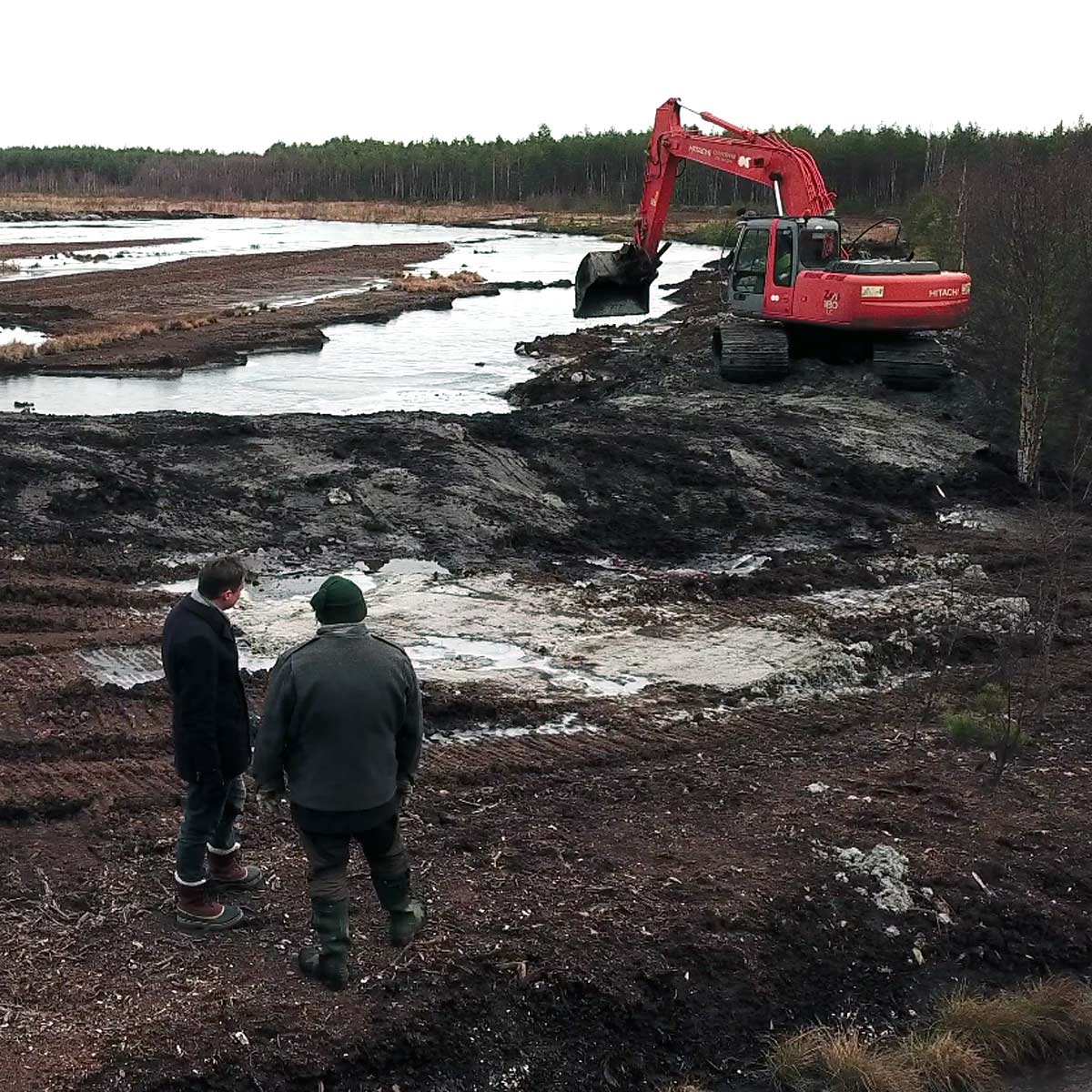
“Some of those emissions will stop immediately,” he says. “But then of course we will have to wait on those natural cycles for the plants to come back.”
It’s a process called rewilding - returning a patch of land to its natural state, allowing biodiversity to flourish once again.
Here’s the extraordinary thing about peatlands - when burned or dried out, theyrelease greenhouse gases. In their natural state however, they do the opposite.
They are what’s known as carbon sinks - natural sites that trap carbon dioxide from the atmosphere and lock it back into the soil.
“The existing marshmires, bogs and peatlands are defined by the UN as highly critical for [the] survival of humankind because they are helping with climate change through natural processes.”
Tero Mustonen is not only a fisherman-turned-conservationist, he’s also a climate scientist. He’s one of the lead authors on reports for the Intergovernmental Panel on Climate Change (the IPCC) - that’s the UN body that evaluates the latest science in this area.
After he won his local battle against Vapo, he had an idea. What if this small project on the outskirts of his village was a model that could be replicated more widely and help reduce carbon emissions on a vast scale?
Boreal wetlands and marshmires extend around the planet’s higher latitudes - from Scandinavia through northern Russia and across the Pacific into Canada.
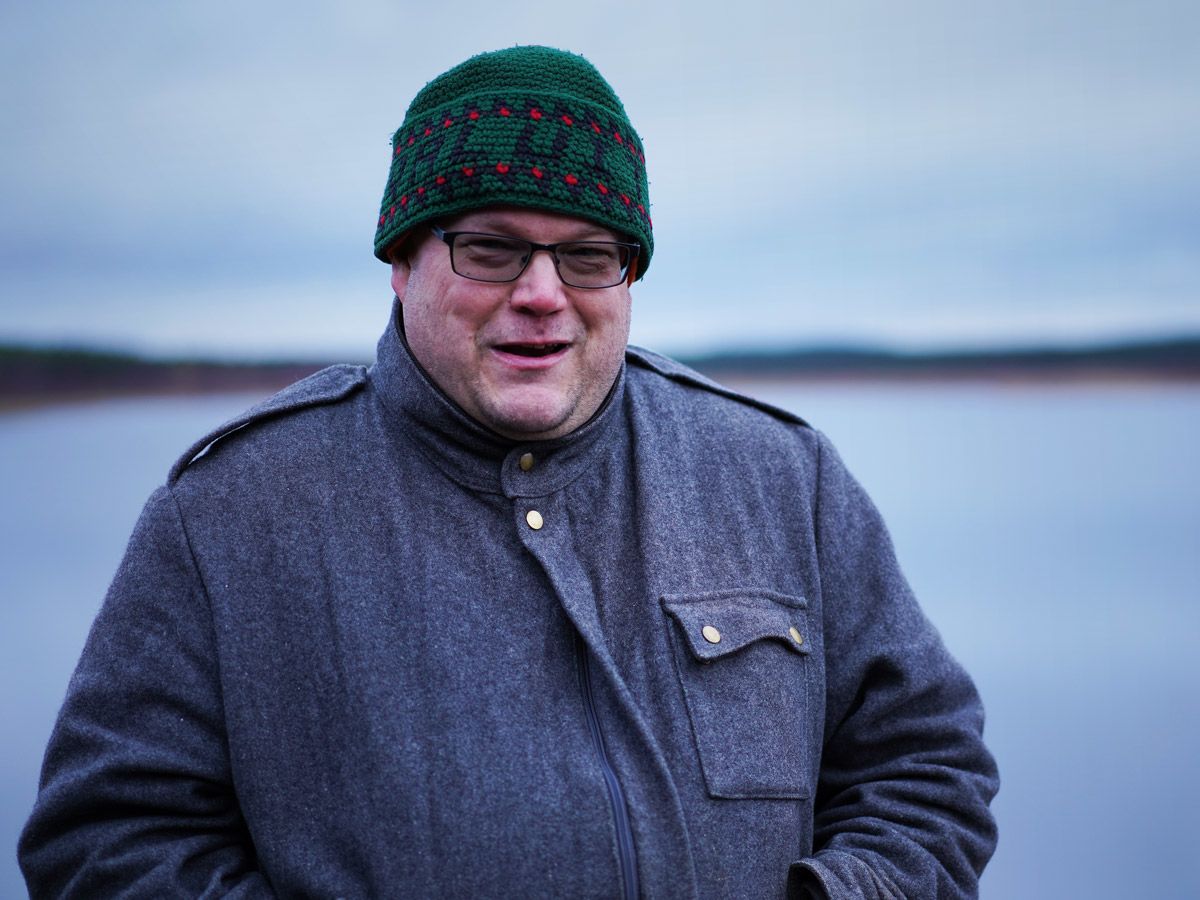
“In Finland we have a massive potential for restoration of peatlands and bogs and marshmires into carbon sinks that are currently degraded.
“We can bring them back into health and create more sites that trap carbon.”
But despite Tero’s efforts, and the Finnish government’s pledge to go carbon-neutral by 2035, Finland is still issuing licences for the extraction of peat at other sites across the country.
Even with the greenest of intentions, the Finns are discovering how stubborn the politics of fossil fuels can be.
The hunt
It’s hunting season. In the village of Selkie, men gather before the dawn. Soon, the first big snowfalls will come. Today is perhaps the hunters’ last chance to catch enough moose to feed the whole community at the annual feast to mark the start of winter.
Tero, who is also head of the village, introduces us to a group of men dressed in bright orange high-vis vests. They make some last-minute preparations: rifles are checked and the dogs are given collars fitted with GPS trackers.
Then the hunters are divided into teams. The dog handlers drive off into the woods, but the rest retreat to a circular wooden hut, where they will sit around a blazing log fire and wait.
The hunt has begun.
In these northern villages this is a tradition as old as human habitation itself. But technology is changing things.
In the past, they’d all be in the woods, tracking the moose on foot. Now the majority sit by the warmth of the fire, checking an app on their smartphones. They’ll go out only when the time is right.

Tracking moose on a mobile phone
“Even though technology is giving assistance to the hunt, we still need traditional knowledge,” says Tero. “There are days when no animals are caught.”
That traditional knowledge includes recognising animal tracks and droppings, and an understanding of the likely movements of the moose according to the weather and the season. And here, too, things are changing.
Everyone around the fire has noticed the snows are coming later.
“We now have Helsinki-style winters all the way up here on the 62nd parallel, which is 400km (250 miles) north,” says Markku Eskelinen, the leader of the hunt. “In one way, it has made the dynamics of the hunt easier,” he adds.
A lack of snow certainly makes it easier to track through the forest. But the changes in the weather are having a mixed effect on agriculture.
For Kyosti Siltala, a lawyer who also runs a small farm and forestry business, the warmer climate means his trees are growing faster, which can mean bigger profits from logging. But he’s also noticed new species and new diseases.
“The whole of nature is changing,” he says. “It’s very difficult to see where we are heading and I’m personally very worried about it.”
I look around the hut at the faces, young and old, lit by the flickering fire. “Is anyone not worried about climate change?” I ask.
Silence.
Here in the rural villages, plans to make Finland carbon-neutral in just 15 years’ time have generated a mixture of hope and trepidation. Yes, they worry about the consequences of a warming planet. But they also fear that some of the measures the city people in government might take to combat climate change could pose a real problem to rural life.
“If they start to ration the fuel for climate reasons, it’s impossible for us,” Tero says, translating for two of the hunters sitting around the fire.
“We rely on these vehicles for our daily life here, and fuel prices are very high, so a lot of our resources are going into that.”
It’s mid-morning before the dogs pick up the scent of a moose. Thanks to the GPS trackers, the hunters are ready and waiting.
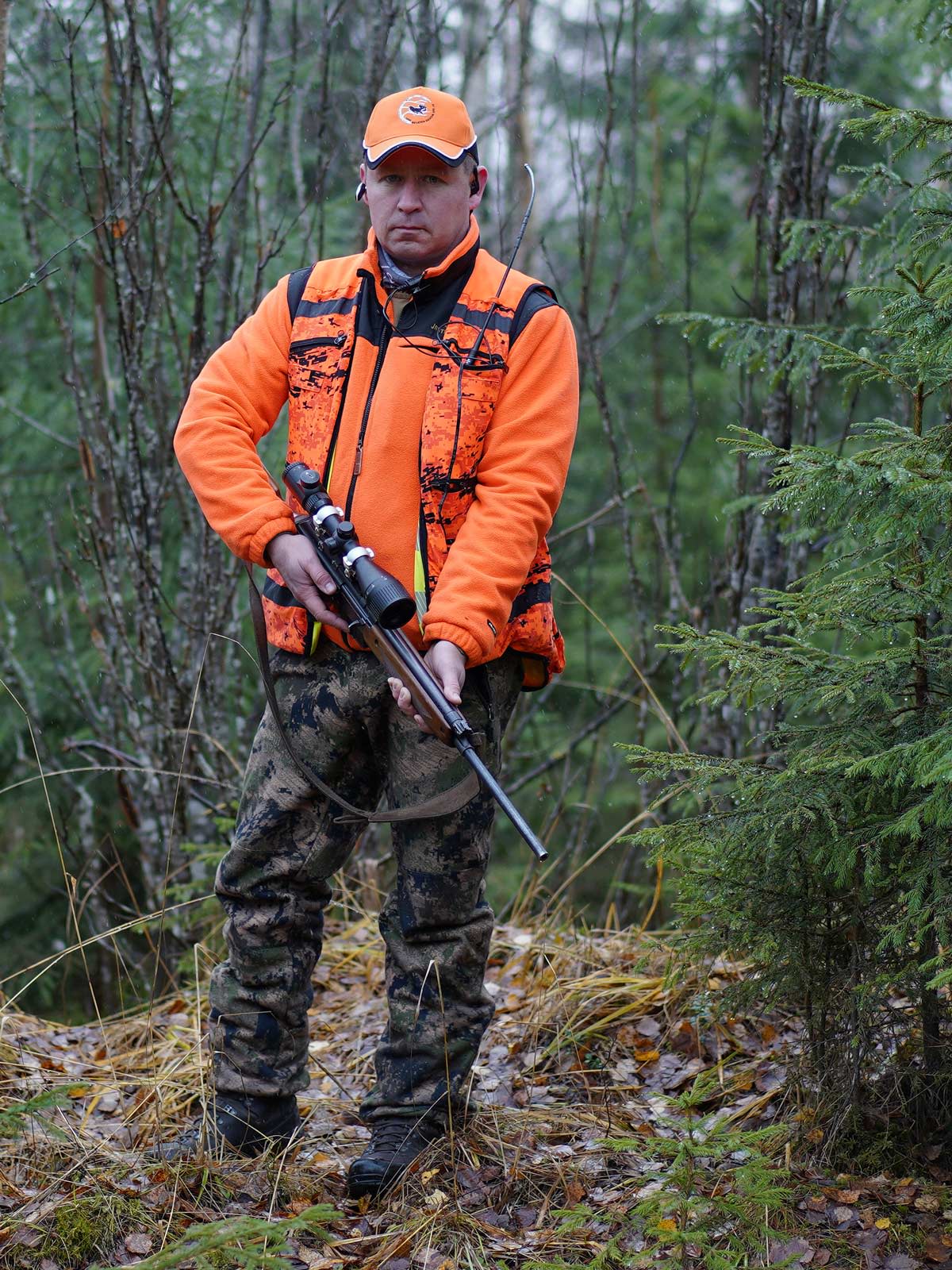
Markku takes up position on a path leading through the woods. In the distance, there is the sound of a dog barking. He raises his rifle. Off to the right, the undergrowth stirs. Suddenly a moose breaks cover and crosses the track. But she’s got a young calf with her. Markku holds his fire.
The hunt has its rules, Tero explains. “It’s never a mass slaughter, or something we do just for the sake of it. Here in the northern villages there is still an understanding of the long traditions of how we have been living sustainably.”
But the hunters aren’t finished yet. Markku gets a message over his radio.
We walk deeper into the forest. A young male moose lies dead on the ground.

The hunter who got the kill is Markku Kervinen - a border guard by day, but in his spare time one of the most prolific hunters in the village. He has cut the animal’s belly open. It’s not for the faint-hearted.
He runs his hand through the animal’s fur and pulls out two small bugs - insects that never used to be found at such northern latitudes and that usually die when the temperature is well below freezing.
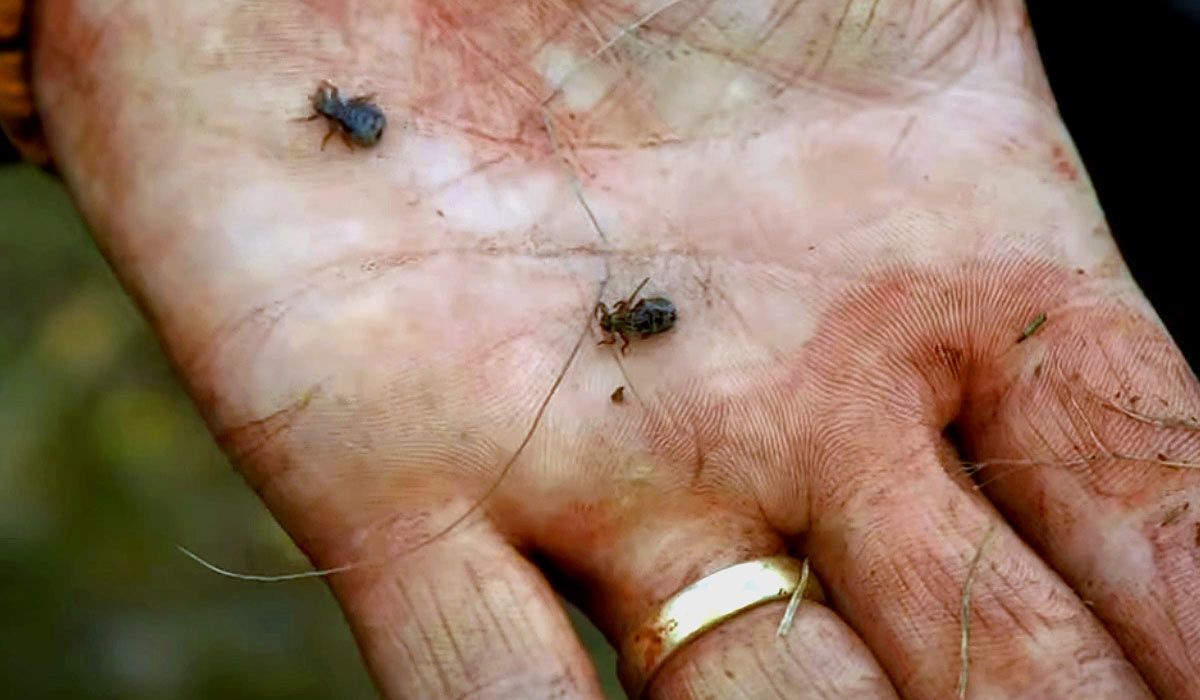
“Those are the moose flies that have now come because of climate change,” Tero explains. “They’re parasites. They weren’t here when we were young.”
The hunters heave the moose on to an improvised sledge. The animal will be skinned and butchered - the meat shared in the community.
“In the northern regions and northern cultures the way we interact with the Earth is the hunt,” says Tero, reflecting on the wider significance of what we’ve just witnessed.
“We are, first and foremost, hunting and fishing societies. We call it traditional knowledge. And this, combined with science, can provide wisdom and ethics of how to treat the Earth and how to live so that humans are not against nature, but with nature.”
Finland’s ‘climate election’
Finland’s general election of April 2019 was dominated by the issue of climate change - thanks, in part, to Tero’s work as a climate scientist.
One report in particular that he worked on, about the rate of warming in the Arctic, had a profound effect. Thousands came out on to the streets of Helsinki and other cities to demand their government do more to tackle the issue.
All the major parties - except one - made tackling the climate crisis a major part of their campaigns, promising ambitious policies to restrict global warming to 1.5C. Proposals included an eco-tax on meat, higher levies on aviation and restrictions on the country’s logging industry.
The right-wing nationalist Finns Party was the only political group not to join in.
Having traditionally focused on the issue of immigration, in the 2019 poll its members switched their attention to what they called “climate hysteria”. They argued not that climate change wasn’t happening, but that Finland, a small country of 5.5 million people, was not mostly to blame for the rise in global CO2 emissions.
Overly-ambitious targets would hurt ordinary people, especially in rural communities, the party said, without significantly contributing to the fight against global warming.
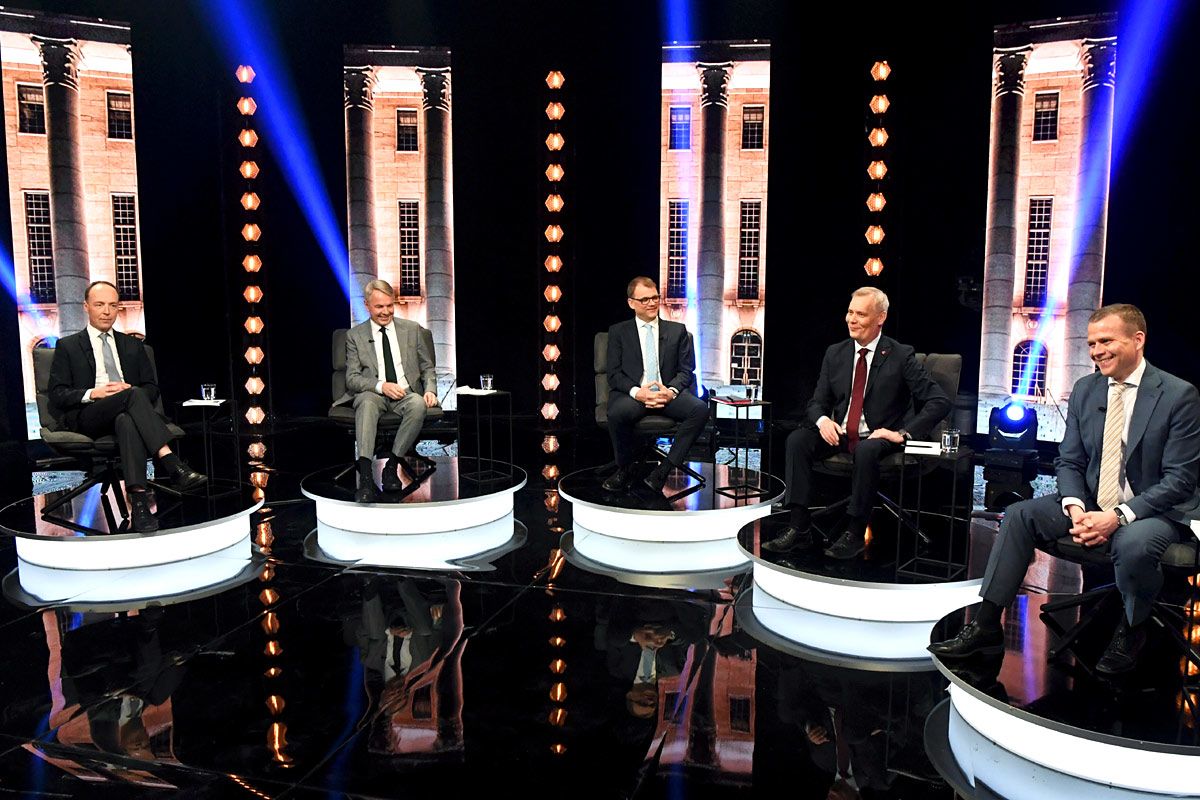
Looking back at some of the debates in the election campaign, I thought about the hunters in Selkie, who worried about their fuel prices going up, even as they fretted about warmer winters.
In Finland, as elsewhere, climate has become a battleground in a broader culture war that has engulfed many Western democracies.
The result of the April election was tight. The Finns Party got the second-largest number of votes, trailing the centre-left Social Democratic Party (SDP) by only 0.2 of a percentage point. But the Finns Party has been frozen out of government by a coalition of five other parties, led by the SDP.
One of the new government’s first acts was to pledge to make Finland carbon-neutral by 2035 - one of the most ambitious targets for reduction in greenhouse gas emissions anywhere in the world. (Norway has promised to go net-zero by 2030 but will rely in part on buying international carbon credits, which Finland says it won’t do.)
The coalition has proved to be an uneasy one. The leader of the SDP, Antti Rinne, was forced to step down as prime minister in December, replaced by his party colleague Sanna Marin, who at 34 has become the world’s youngest serving PM.
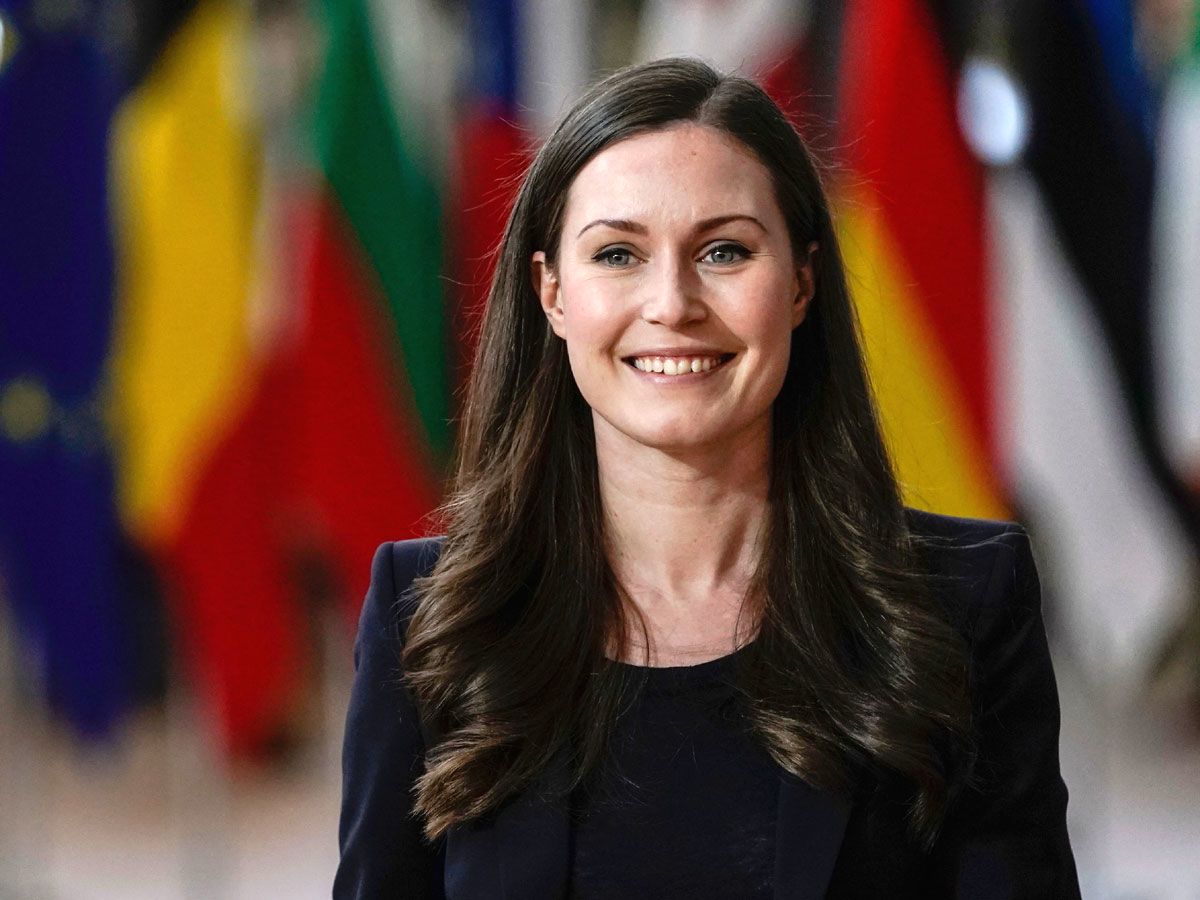
But the coalition has held together and remains committed to going net-zero by 2035. The government’s plans include investment in renewables, such as wind and solar power, energy tax reforms, investment in railways and conservation projects.
The city of Helsinki has announced an international competition, offering a prize of one million euros for anyone who can come up with a green alternative to coal as an energy source in the capital.
When I went to see Krista Mikkonen, Minister for the Environment and Climate Change, she was upbeat about the challenge that lies ahead. The 2035 target, she told me, had really focused minds.

“We understand that we need action now. We can’t wait because 2035 is quite close. It has also been a very good signal for businesses. They are really thinking how they can help cut down the emissions and have new kinds of technologies.
“And they understand that if they are the first ones on the market... they can have a lot of business all over the world, because the whole world is really calling for answers and solutions, how to cut the emissions.”
But where some see a business opportunity, others see a threat. The governing coalition includes Krista Mikkonen’s Green League but also the Centre Party - which has traditionally represented rural agrarian communities and has longstanding ties to the peat industry.
Finland has legislated to end the use of coal for power and heating by 2029. When I asked Mikkonen why the new government doesn’t have a plan to end peat production there was a long silence.
“That’s a good question,” she said finally. “I think we should do it. But it is not in our government programme at the moment. We don’t have a political agreement on that.”
Environmental activists like Tero Mustonen say that ending peat production should, in theory, be one of the easiest and most effective measures to help Finland reach its net-zero carbon-emissions target.
“There’s a lot of peat land in Finland,” Mikkonen explained. “And there are a lot of areas where the peat industry is locally quite important. So what we need to do is create jobs in the same areas for those people who are now dependent on the peat industry.”
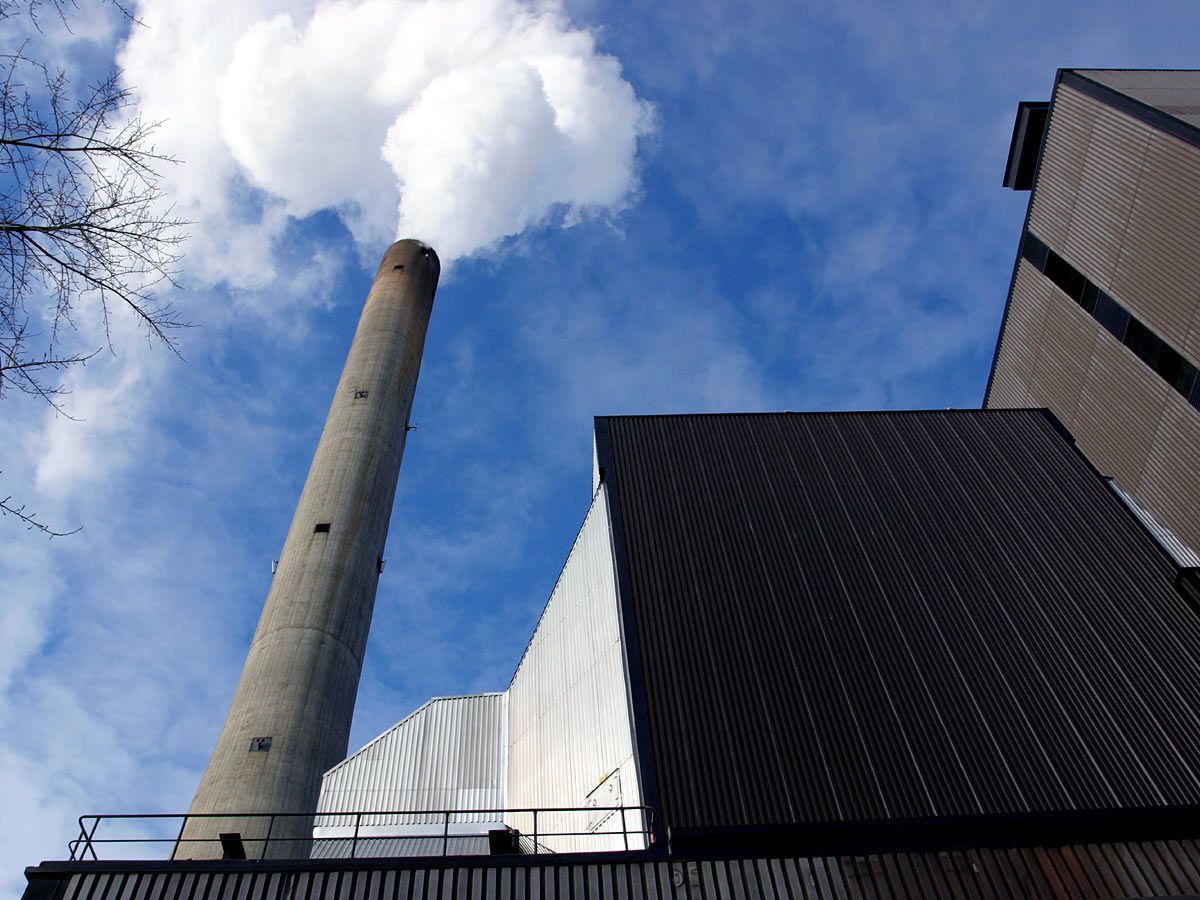
Finland’s use of peat for energy and heat production has declined since the mid-2000s. The industry employs around 2,600 people each year. Much of the work is seasonal. Environmental campaigners say those jobs could easily be replaced with investment in renewable energy.
But the politics of this native Finnish fossil fuel is proving complicated.
Before stepping down, former Prime Minister Antti Rinne promised that government subsidies for the peat industry - currently worth around 200 million euros a year - would be removed “at some point”.
But for now, they remain in place.
Moose feast
A week after the moose hunt, the inhabitants of Selkie gather in the village hall for the annual feast, a communal meal to celebrate the traditional beginning of winter. Outside, snow is falling. Inside, raffle tickets are selling fast and a long table is laden with the spoils of the hunt.
I sit down with Matti, his partner Senja and their two young children as they tuck into plates of steaming moose stew, boiled potatoes and red berry sauce.
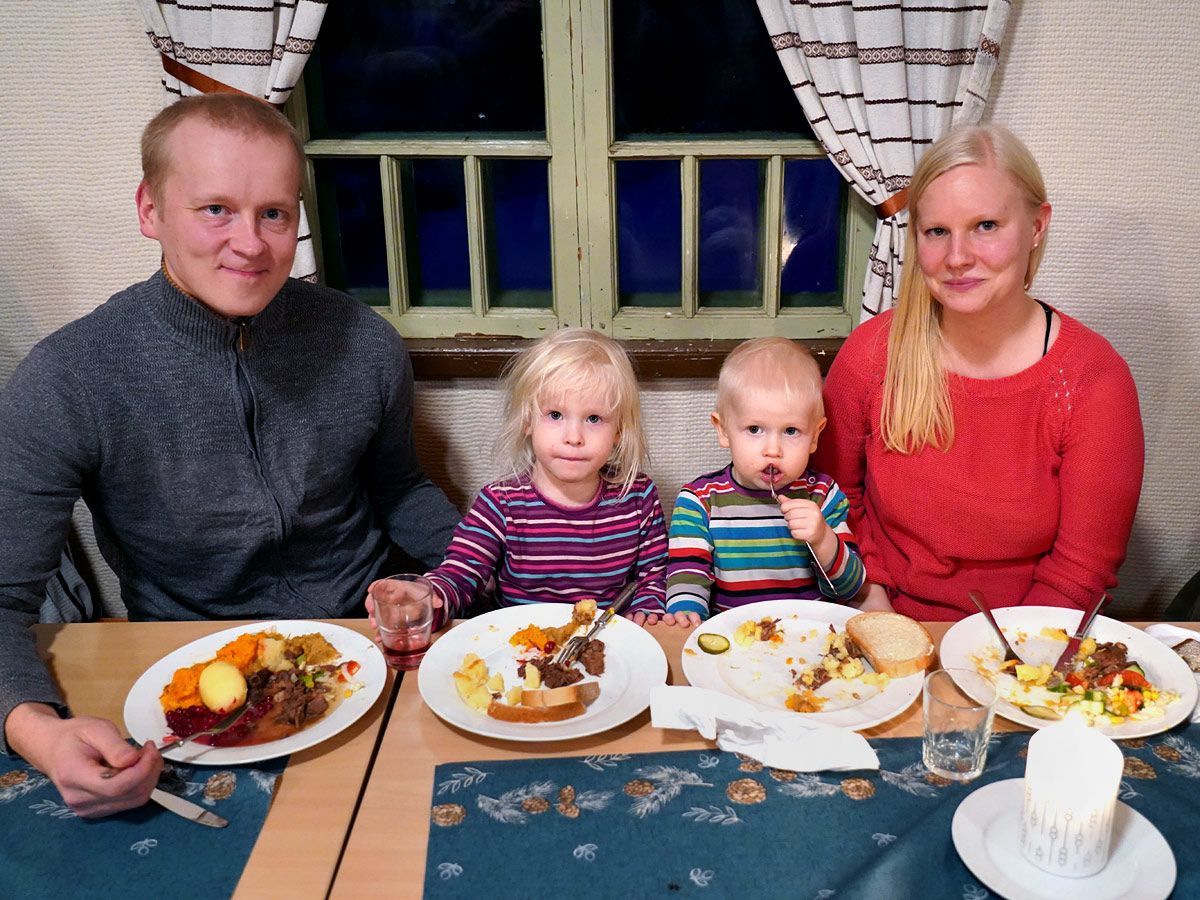
“The signs are there, and the anxiety that comes with climate-change news can be overwhelming,” Matti tells me. “It makes me so sad. I try not to think about it too much.”
Matti is a teacher and commutes to his job in the nearby town of Joensuu.
“I’m trying to reduce my use of the car but it’s hard to work from here. I already work one day in the week from home. How else could I reduce it? I don’t know.”
“We try to recycle everything and grow our own food, like carrots and potatoes,” Senja adds.
Matti believes the solution to climate change is really quite simple - less work and less consumption.
“It’s mostly a societal problem. It’s about giving up the way you live. It can be hard if you’re the first ones to change but it is achievable.”
Senja is not so optimistic about Finland’s chances of creating a less consumer-driven society.
“I think it’s quite hard to achieve, because we have everything, and I don’t think people would like to give up those things.”
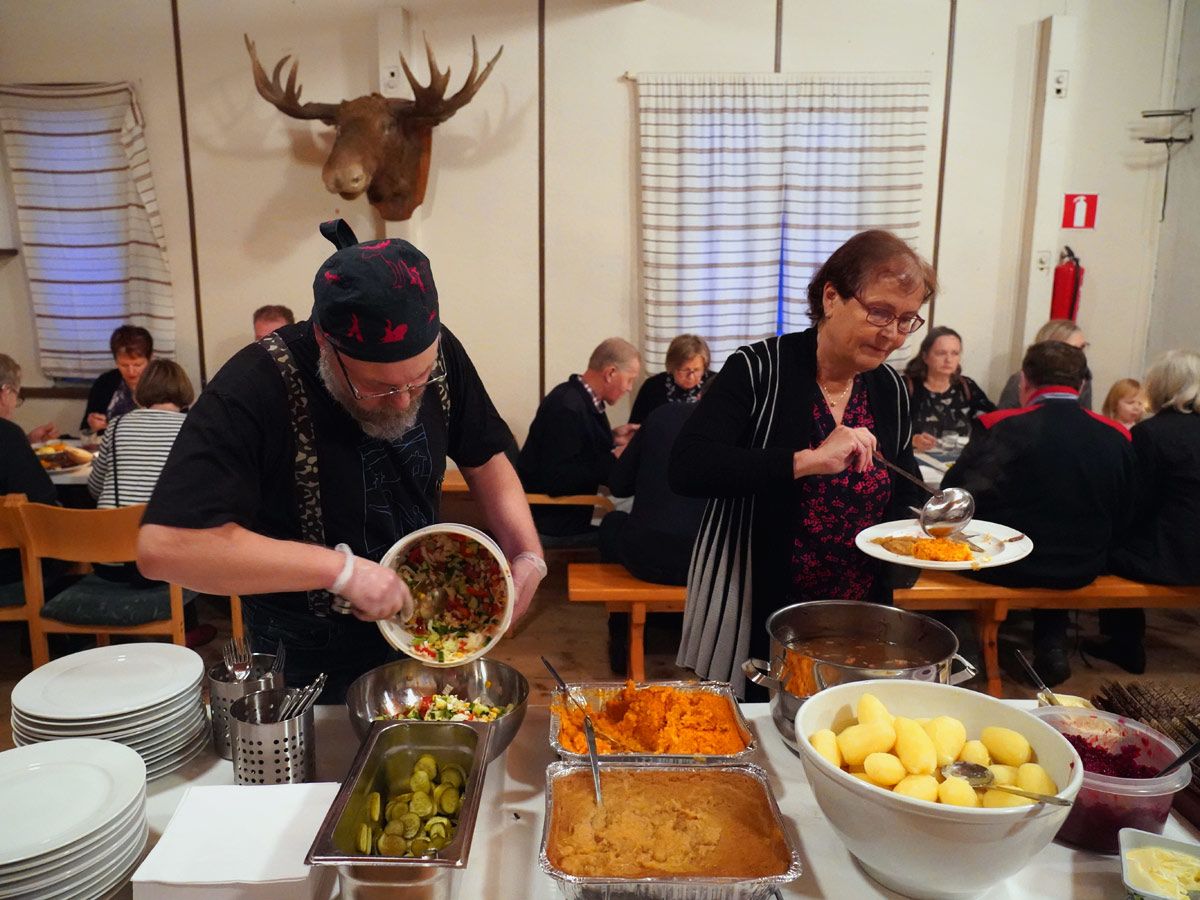
After the moose stew, Tero Mustonen takes to the stage at the far end of the hall to announce the start of the much-anticipated raffle. Excited children are dispatched up to the podium to receive their prizes, including hunting jackets, fishing nets, and bags of frozen moose meat.
“We are at a profound crossroads,” he tells me. “The forces that have been unleashed by our greed, our misunderstanding of what nature is and our endless economic idea that it can grow without any checks and balances has come to its end.”
In his log house on the edge of the forest, Tero is working on the next report to the IPCC, which will shape the way governments around the world respond to the challenges of climate change in the coming years.
He’s careful to emphasise that he doesn’t speak on behalf of the UN body, but he says the climate crisis is more urgent than even most reports in the press suggest.
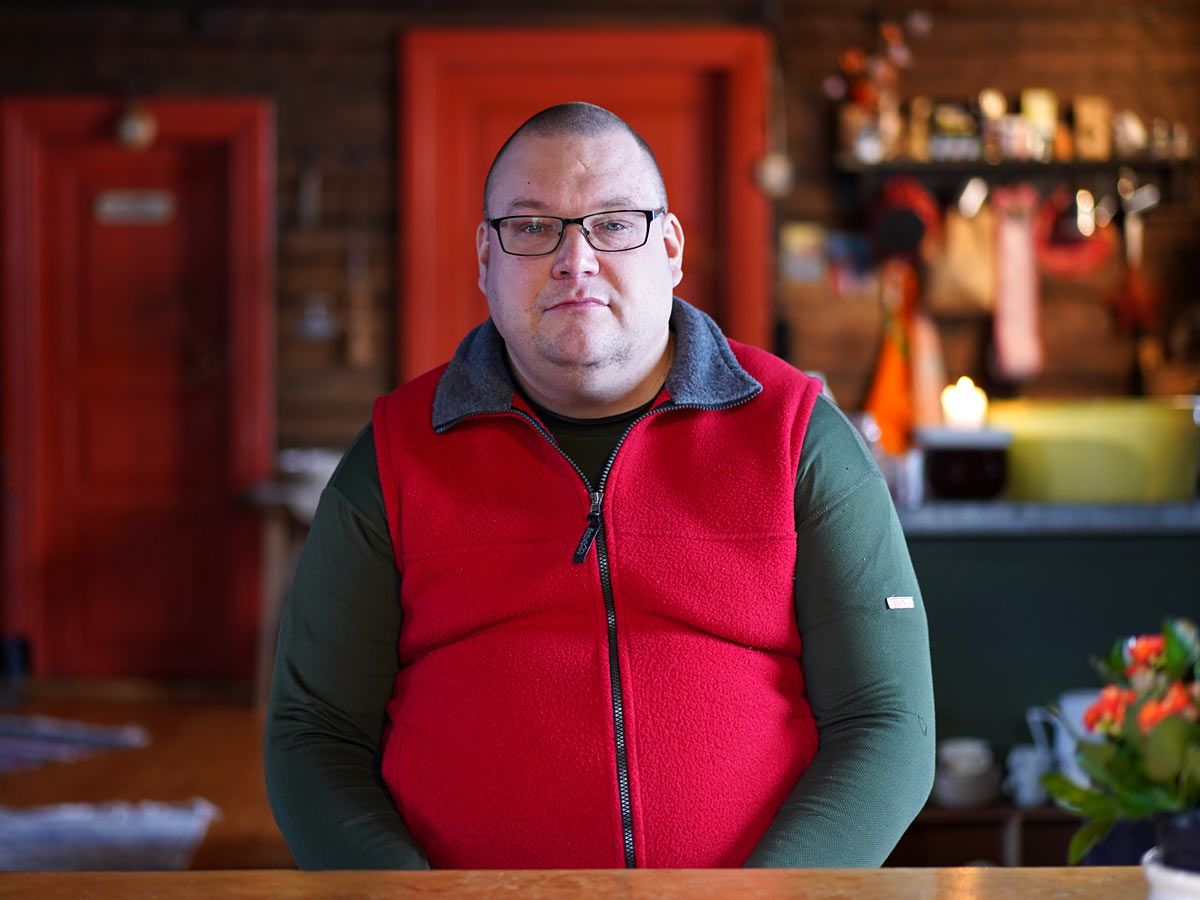
“I think it’s far worse than what we have been discussing in the media. Once we get into the 2030s, 2040s, there will be impacts to the global security and global governance which will be extremely hard to control.
“I would give it eight-to-10 years when we really, really, truly have to do at least two things: one, the emission cuts and secondly, the land use. We will not be able to stop human-induced climate change any more. There will be impacts.”
Tero says it is now a question of mitigation rather than prevention.
Then he says something that I’ve rarely heard from a scientist.
Now is not the time for more study, experiments or peer-reviewed papers, he explains. Now is the time for action.
“What more evidence do we need? The planet is truly shifting. I don’t think we need more science or data as such. We have all the data. We have the technologies. We can disagree on other things, but let us be united on this.”
Credits
Author: Gabriel Gatehouse
Field producer/photography: Maya Rostowska
Video/drone footage: Jack Garland
Additional images: Getty Images, Alamy
Peatland map: International Mire Conservation Group (IMCG) - and with thanks to Dr Franziska Tanneberger, University of Greifswald, Germany
Editor: Paul Kerley
January 2020
BBC NEWS

